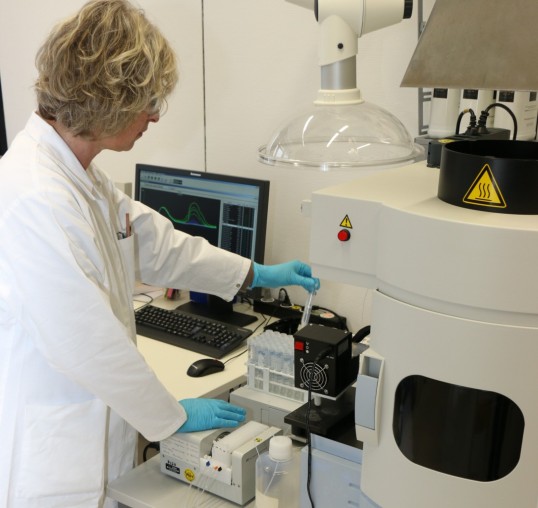- Missions of the IFA
- Fields of activity
- Organisation
- How to find us - Address - E-Mail
- BGIA is now IFA
- Impressum
Metal analysis
Analysis of metals and selected inorganic hazardous substances

Analysis of a sample for metals by means of an inductively coupled plasma optical emission spectromer (ICP-OES)
Source: IFA
The laboratories of the Metals analysis section in the Chemical and Biological Hazards Department conduct analyses of atmospheric dusts and material samples containing metals. A range of element analysis methods are used.
Both single-element analysis methods, such as atomic absorption spectroscopy (flame/graphite furnace/Zeeman effect) and atomic fluorescence spectroscopy (AFS) for mercury analysis, and multi-element methods such as inductively coupled plasma optical emission spectroscopy (ICP-OES), inductively coupled plasma mass spectroscopy (ICP-MS) and total reflection X-ray fluorescence (TXRF), are used for quantitative element analysis. The range extends from trace to ultratrace element analysis.
ICP-MS is also used to analyse atmospheric and material samples for organotin compounds.
Ultraviolet visible spectroscopy (UV-VIS) is used primarily to detect chromium(VI) compounds in atmospheric and material samples. Certain inorganic compounds (such as hydrogen peroxide and monophosphane) are also analysed by means of this method.